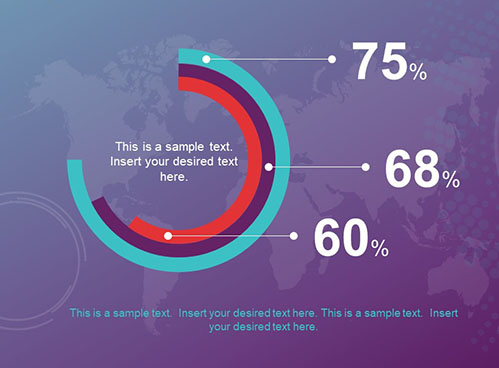As the world of online retail continues to grow at an incredible rate, the information that is possible to collect and analyze also grows along with it. We are able to access an amazing amount of detailed information, to help our online businesses make more informed decisions regarding our customers, products we offer and how we will organize and execute our marketing campaigns. This big data has become an essential component to many successful e-commerce businesses that look to this information to help guide their future business moves. Here are just a few of the most significant ways you can make use of big data within your online business.
1. Get personal
This has been a growing trend with online retailers, as they are able pinpoint specific individuals and target distinct products directly at them. Because the customer’s data has been collected and analyzed with regards to their preferences, buying patterns and online browsing history, it’s easier to single out the products they are most likely to be drawn to purchase. You’ll have a much higher rate of success in selling 3D televisions to those people who have been searching the internet for reviews and information about 3D televisions, rather than broadly trying to advertise to everyone. Utilizing big data regarding internet searches for this item can help you direct your advertising appropriately.
Email campaigns directed to their personal preferences, as well as advertisements that appear on various websites can be set up to display products that are personally appealing and enticing to individuals based on what the big data says they are likely going to buy. Based on your customers’ past purchases, you can offer them similar products that they may love. If your business deals in kitchen tools, chances are you won’t sell a second blender to the same customer right away, but perhaps they may be interested in a juicer or food processor.
2. Offer a deal
Each person has a different price threshold that will trigger them to take action and make a purchase. For some, it will be lower than others, and for some, the simple offer of free shipping is enough to initiate a purchase. Big data can help determine where that threshold is for each consumer, as exhibited by their past purchases. When you know what will get each customer spending, you can tailor your offers to suit those specific triggers. This means you won’t have to give a bigger deal than is necessary for some individuals, who are satisfied to save only the shipping costs.
3. Give them what you know they’ll like
Big data can give you plenty of clues into things customers want that you may not even be offering. Taking a look at what people are searching or and talking about can give fairly obvious insight into what they are willing to buy. Having this knowledge quicker than your competitors means you can get in on the ground floor, before anything really takes off, and establish yourself as the leader in the game. Chat forums and other interactive online platforms can give you a lot of insight into what people are really thinking, in an unfiltered way. They’ll freely express what they like and don’t like and their reasons. A tool like Social Mention can help you search through and analyze what’s being discussed throughout social media.
4. Improve your own business
Things can always be made better, and the information that big data provides can help make those little changes that can lead to big improvements. The ability to track specific details regarding everything from expenses to human resources has uncovered two major benefits for businesses. Decision making can be done with a solid base of information, clearly exhibited by the data collected. For example, a roadside service company can better organize their fleet and offer customers live updates as to the status of their dispatched help. Data can help keep track of where company vehicles are, giving customers an accurate arrival time, keeping them well informed about what’s happening. And, customer interactions can be markedly improved through the creation of troubleshooting databases, so they are able to locate a solution and pass that information on to the customer at a much faster turnaround time. If there have been a number of complaints about the same issue, having a record to refer to can help resolve future issues much more quickly.
5. See what’s trending on Google
Google does their own big data collection, that is available to everyone to access through Google Trends. What this data shows are the things being searched for, and who exactly is looking. This is a huge asset to have when trying to create SEO content that searchers will actually find. And, before you go ahead and spend any marketing dollars promoting a specific product or service, you can see if there are actually any interested customers. Google Trends has actually had a great deal of success in predicting fluctuations in the market, making it a great indicator of what will be a prosperous business in the coming future. If they are interested, Google Trends can give you specifics about exactly what they’re looking for, so your marketing campaign can target those keywords for maximum effectiveness.
Big data is a big deal. It collects a plethora of detailed information, then helps you and your business make informed decisions, based on what the data says. Having this in your pocket means you can create more targeted marketing campaigns, saving your business the time, money and effort you would have otherwise spent on less successful endeavors. Make use of this incredibly informative tool to help benefit your business, as well as your customers, who can enjoy the personalized attention they will be receiving from businesses who can more keenly recognize their wants and interests.








![60 stats & trends that will define the future of eCommerce [Infographic]](https://crayondata.ai/wp-content/uploads/2022/05/eCom-374x288-1.png)
